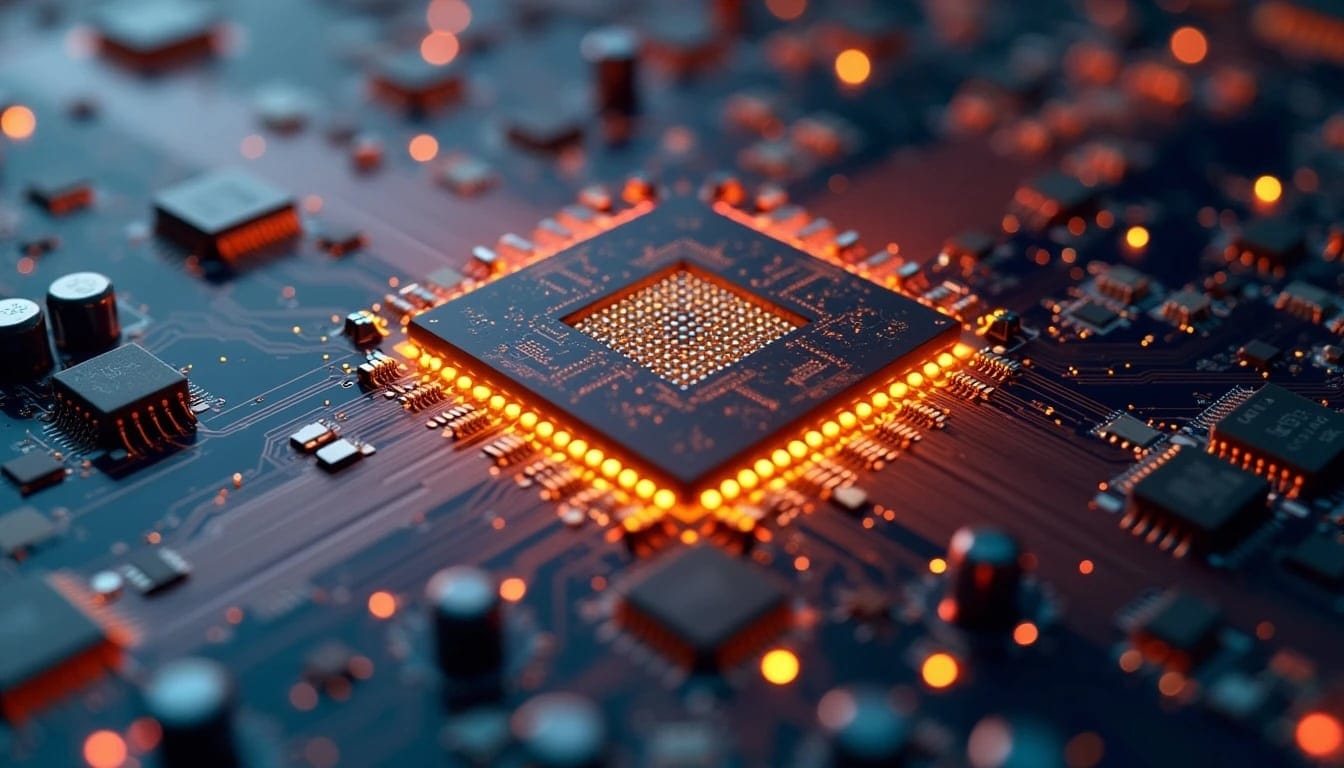The global semiconductor market is projected to grow by 15% in 2025, according to data from IDC. This advancement will be primarily driven by the memory segment, which is expected to see growth of over 24% due to the demand for high-performance solutions like HBM3, HBM3e, and the upcoming debut of HBM4 in the second half of the year. These technologies are key to accelerating artificial intelligence (AI) processes, where the market increasingly requires higher processing capabilities.
On the other hand, the “non-memory” segment is also expected to benefit from an estimated growth of 13% due to the high demand for integrated circuits (IC) from advanced nodes aimed at AI servers, high-end smartphones, and WiFi 7 solutions, technologies that will dominate the consumer and enterprise markets in 2025.
Recovery in Mature Nodes: Automotive and Industrial Control
Mature nodes (ranging from 22 nm to 500 nm) will play a crucial role encompassing applications in consumer electronics, automotive, and industrial control. After a period of correction and oversupply in 2024, demand is expected to recover in 2025. This improvement will be driven by inventory replenishment in sectors such as automotive and industry.
- 8-inch fabs will see their capacity utilization rate rise from 70% in 2024 to 75% in 2025.
- 12-inch mature nodes will increase their average capacity utilization to surpass 76%.
Overall, global foundry capacity utilization is expected to increase by an average of 5 percentage points during the year, which will help mitigate the effects of the oversupply observed in recent quarters.
2025: A Pivotal Year for 2 nm Technology
The year 2025 will be critical for the mass production of 2 nm technology, marking a milestone in the semiconductor industry. The three major manufacturers – TSMC, Samsung, and Intel – will lead the adoption of this technology, though they will face critical challenges related to balancing performance, power consumption, and cost per area.
- TSMC is actively expanding its facilities in Hsinchu and Kaohsiung (Taiwan), with plans to begin mass production in the second half of the year.
- Samsung, following its usual strategy, may get ahead of TSMC in the initial rollout.
- Intel, for its part, will focus on its 18A node, which incorporates the innovative Back Power Delivery Network (BSPDN) to optimize power delivery.
These developments will test the ability of the three leaders to optimize their processes and ensure a high yield rate. Mass production of 2 nm will begin with key products such as smartphone processors, mining chips, and AI accelerators, which are essential to meet the growing demand for advanced applications.
Focus on Expansion and Efficiency
As 2 nm processes are implemented, production expansion and improved yields will become the main success indicators in the industry. The market will be closely watching the growth rate of each company’s manufacturing lines, a key factor that will determine their competitiveness in this advanced technology segment.
Summary of Expected Semiconductor Market Growth in 2025
| Segment | Estimated Growth 2025 | Key Drivers |
|---|---|---|
| Memory | +24% | HBM3, HBM3e, launch of HBM4HBM4 is the next evolution in memory technology,… |
| Non-memory | +13% | AI servers, mobile phones, WiFi7 |
| Mature nodes (8″) | +5% in utilization | Consumer electronics, automotive |
| Advanced nodes | Critical phase 2 nm | TSMC, Samsung, Intel |
In conclusion, the semiconductor market is projected to experience robust growth in 2025, driven by technological innovation, the recovery of mature nodes, and the implementation of advanced processes like 2 nm. The demand generated by artificial intelligence, advanced connectivity, and consumer electronics will be key to sustaining this growth and defining competitiveness in an increasingly sophisticated and strategic industry.

